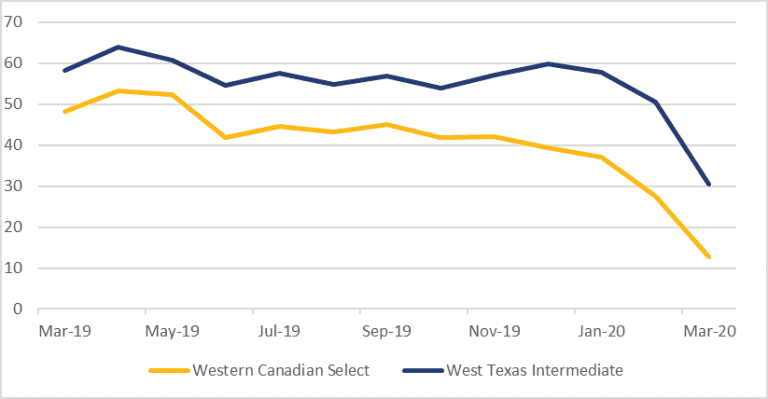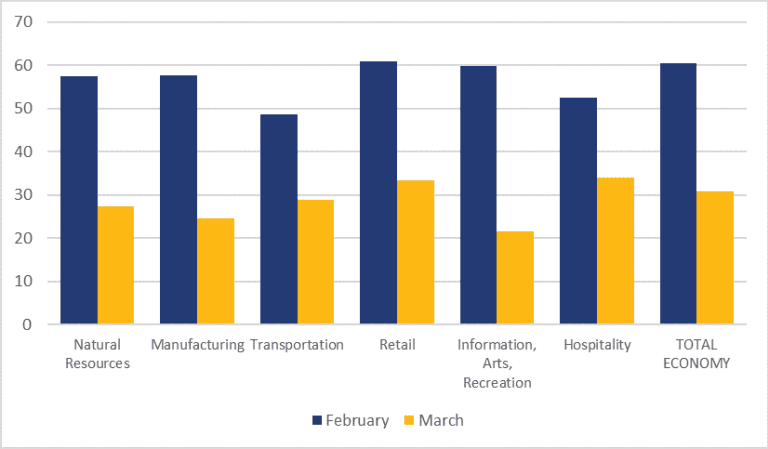The various sectors of the Canadian economy have been affected due to the pandemic COVID-19. The impacts started to happen since the virus started a few months back. The pandemic clearly showed its deadly nature in the form of impacts on the whole world. As it started from the Chinese province Hubei, from an animal market in Wuhan. It has deeply and semi-deeply affected at least 60 countries worldwide. Furthermore, partially affected almost all the continents of the world including Africa.
The risk factors identified by continent North America are too many especially in terms of travel, trade, and hospitality industry. With respect to the sufferings in the United States of America. Canada is a huge country that has suffered in some provinces. While in others the effects are not that drastic but still evident.
In line with the pandemic COVID-19, the risks factors associated with the Canadian economy are as follows;
RISK FACTORS
Demand for Products & Services
There has been a huge gap between the demand for products and services and supplies. As Canada came into complete lockdown, people stayed home. Therefore, that is a huge factor that affected the demands of products in the market. Furthermore, it affected the services industry in Canada. It came into the consideration of the provincial government whether or not each industry is essential. The provincial Govt. further restricted the use of services and products imposing a ban until notified. Healthcare and pharmacies are two of the few essential services that were open to people to minimize the impacts.
Nature of the Process of Production
The nature of the production process also changed with time as the COVID-19 showed its impacts on the Canadian economy. The question that arises now is. Do we Need employees to be Close together? Hence, for the production of good and delivering services? However, some operations and processes became automated limiting human use.
However, even in Canada, the processes can’t be fully automated irrespective of radical change management strategies.
Worker Availability
Most people in Canada are under self-isolation due to complete lockdown. Hence, the availability of workers in such a scenario is on the low side. People don’t want to be a part of the COVID-19 pandemic, neither they want their families especially children to have such a disease that can be life-taking. The limiting of activities, especially the senior staff has resulted in the understaffing of the voluntary sector. Hence, automatically increasing the risk factor to the Canadian economy.
Proximity to others on the Provision of Good and Services
The level of Proximity to others has decreased, i.e. public contact and on the provision of goods and services. Most cultural, sports and educational or academic activities have been canceled due to the proximity of participants in the delivery of goods and services. This has been the scenario in almost all the provinces and territories in Canada. Several other business activities used for leisure and good time pass are being closed including restaurants and esthetics.
The vulnerability of businesses in the Industry
The sectors of the Canadian economy are divided into and made up of a huge share of SMEs i.e. small & medium enterprises. They are like the building blocks of a strong economy and acts as a shield in hard times.
The SMEs have been affected in such a way that they are lacking the cash flow to offset huge revenue losses over longer periods. Hence, the sustainability of SMEs due to COVID-19 has been a national level challenge for Canada.
Read related article: EUROPE ECONOMY, TOURISM & THE EFFECTS OF ‘COVID-19’
THE AFFECTED SECTORS OF THE ECONOMY
Almost, all the sectors of the Canadian economy have been affected due to the pandemic. However, some of the sectors are discussed below;
Food services & Accommodation
A major setback in the food services and accommodation sectors resulted in shutdowns of many restaurants and accommodation services. A restaurant Canada survey of the food industry revealed that many restaurants were considering a permanent closure of their services in the wake of COVID-19. The Hotel Association of Canada revealed the stats that the hotel occupancy was less than 10% across the country.
The tourism industry association also revealed some worrying stats that the industry can lose up to $6 billion per month due to the pandemic and nearly 778,000 jobs in total. The domestic tourism activity is still persistent as domestic flights are running with precautions. The spending in the industry accounts for 80% of the economic activity and this can increase as well if Canadians prefer staying in Canada for their summer holidays. It would take at least 1-2 years to bring stability to the sector due to the impacts of Covid-19. Obviously, the tourism industry has been a major source of revenue for Canada.
Transportation
The transportation industry i.e. Airlines, trains, buses, and coaches all accounts for a huge revenue generation and part of the daily economic life cycle for Canadians. People working close to Toronto, and living in suburbs prefer traveling from trains. Hence, the provincial govt. also banned public transportation due to valid reasons for lockdown. Since the beginning of the pandemic, the taxi companies saw their passengers count going down by 75%. Currently, it must be close to 90-95% as all modes of transport are on closure.
The scenarios related to road transports i.e. truckers delivering from Canada to the USA and vice versa has been on a little rise. This has been primarily due to the use of online orders as they are delivered via road transport. However, strict rules are still applicable for truckers and all delivery vehicles.
Arts, Entertainment & Recreation
Canada has been a center of arts, entertainment, and recreation for almost 50 years, primarily due to vital contributions in the Hollywood industry as well. The Toronto International film festival is one of the most visited and famous film festivals in the world and is for international audiences from all around the world.
The pandemic has largely affected all kinds of arts and recreation activities in Canada, especially due to international travel restrictions from outside Canada.
Oil & Gas Extraction
O&G sector has always been on the rise in Canada with Oil & Gas extraction activities taking place in Canadian territories and provinces on a highly regular basis.
The oil prices have fallen significantly due to the pandemic and thus there has been a decrease in demands for petroleum products. One of the major oil projects i.e. Bay du Nord project off the coast of Newfoundland and Labrador has seen the impacts closely & has been put on hold.
Retail Industry & Trade
Impacts of COVID-19 have resulted in the closure of the retail industry, shopping centers, and many famous outlets and shopping arenas to a complete closure for a specific time. Canada known heavily for its shopping trends and culture was specific in banning most places that are for the general public. The exceptions hold for the necessities i.e. grocery and pharmaceuticals industry i.e. the pharmacies.
However, in some cases, online shopping is seeing stronger growth and this has been the trend in all provinces in Canada since COVID-19.
Manufacturing
The manufacturing sector has been less affected than the other sectors in Canada and the main reason is that the manufacturers are able to build inventories.
The majority of auto companies in province Ontario have temporarily halted the production for the sake of worker’s safety. Another reason being a weaker global demand which means a general halt in major operations in Ontario auto companies.
Elsewhere, in Canada the companies have ceased operations, however, aluminum smelters will cut production. The industry will definitely get back to their target achievements soon after the pandemic gets over, with recovery time may be less than a year.
Read related article: INSURANCE INDUSTRY’S ROLE AMID ‘COVID-19’ OUTBREAK


